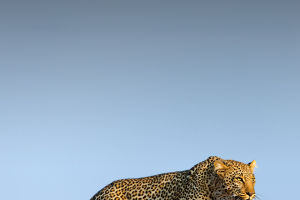The deer is a fascinating animal with a unique set of habits and behaviors. It is known for its agility, alertness, and adaptability to different environments. In this article, we will explore the various aspects of the deer's life and habits.
The deer has a well-developed sense of hearing and smell, which it uses to detect predators and other dangers. Its sense of vision is slightly weaker than its other senses, but it compensates for this with its exceptional speed and agility.
With long and slender limbs and narrow and pointed hooves, it can run quickly and jump great distances. The deer is especially skilled at climbing steep slopes and jumping across large spans with ease.
The deer are typically found in mixed coniferous forests and mountain grassland areas, where it feeds on grass and leaves. It is most active during the morning and evening when it wanders around in places near water sources and abundant food. The deer has a range of about 5-15km and prefers to feed on grass and leaves in the morning and evening.
While female and young deer live in groups, male deer typically live alone and only return to the group during mating season. During the breeding season, stags fiercely compete for females, occupying a certain territory and attacking each other with their long horns. This often results in casualties on one side.
The following year, the female deer gives birth to one fawn per litter from April to June, and the young have white spots on their bodies.
The lactation period for fawns is about 3-4 months, and they become sexually mature after 2-3 years. The life expectancy of a deer is around 25 years.
During the day, deer prefer to rest on sunny slopes with deep thatch and similar body color, while at night they roost in the middle or upper part of slopes. The direction of the slope is variable, but sunny slopes are the most popular, and the thatch is relatively low and sparse in roosting places. Deer are social animals and tend to cluster, with each herd consisting of 2 to 10 individuals.
In non-breeding seasons, there are several small herds composed entirely of adult stags or adult females, called "stag herds" and "doe herds." During the fawning season, stags leave the herd to give birth in a quiet and secluded place. They then live with their fawns or combine with other mother and child herds, sometimes forming groups of up to dozens of individuals.
The deer is a herbivore with a compound stomach, and it can be fed a variety of juicy feeds and supplemented with grains, beans, and other concentrated feeds and mineral feeds. Its preferred food is oak leaf potato seedlings, followed by corn straw, rice straw, wheat straw, and other plant matter.
The plum deer, a subspecies of the deer, is particularly prized for its economic value. It is raised for its meat and antlers, which are used in traditional Chinese medicine. Plum deer have a high survival rate and grow rapidly, with bucks reaching over 50kg after one year.
The sexual maturity of male and female deer is early, and they can be mated at the age of 1.5 years, with their fertility strongest at the age of 3-4 years.
In conclusion, the deer is a remarkable animal with unique habits and behaviors that have adapted to different environments. It is a social animal that tends to cluster in herds and is most active during the morning and evening.
While male deer tend to live alone, they fiercely compete for females during the breeding season. The deer is a herbivore that can be fed a variety of feeds and is prized for its economic value.


